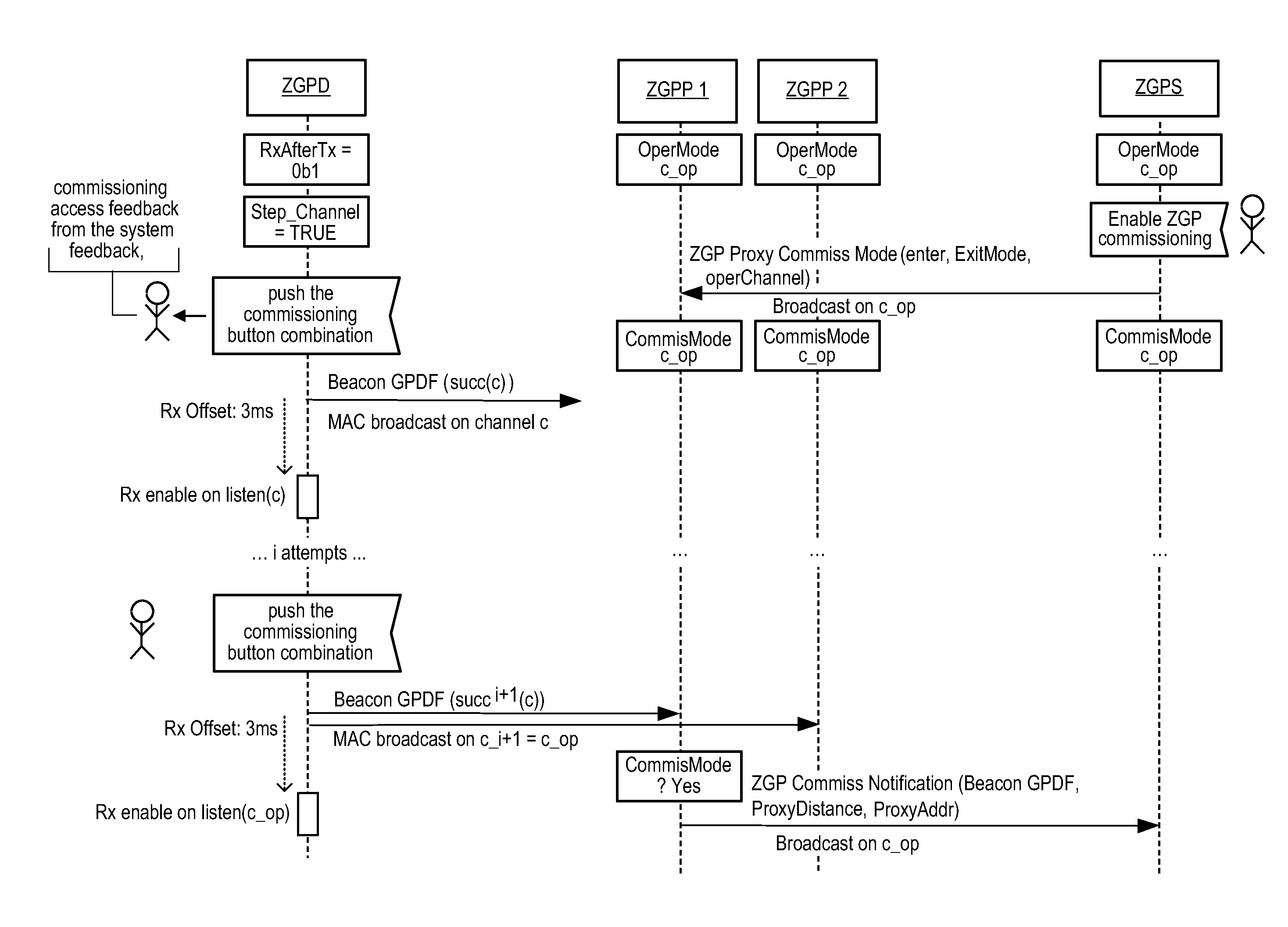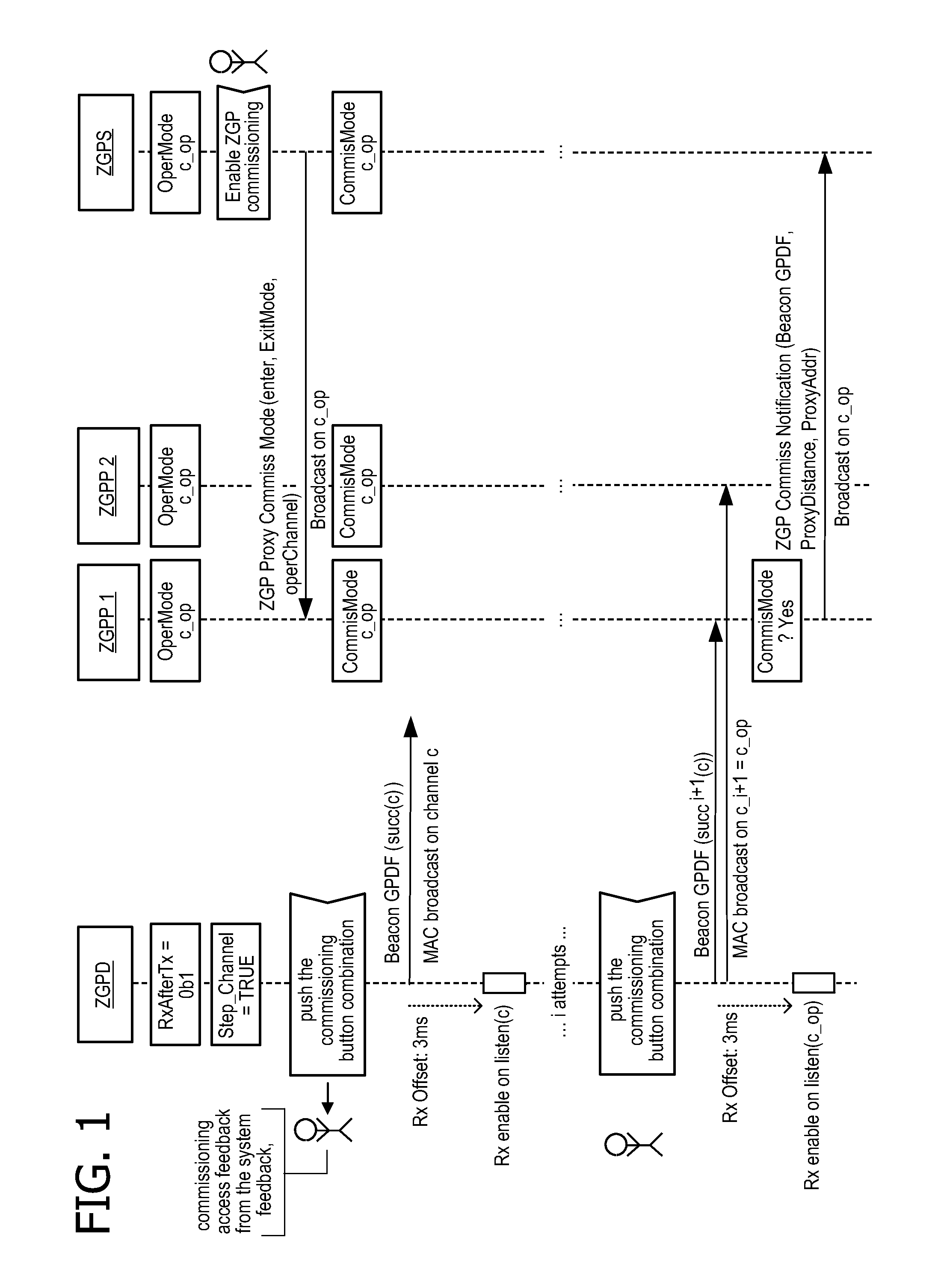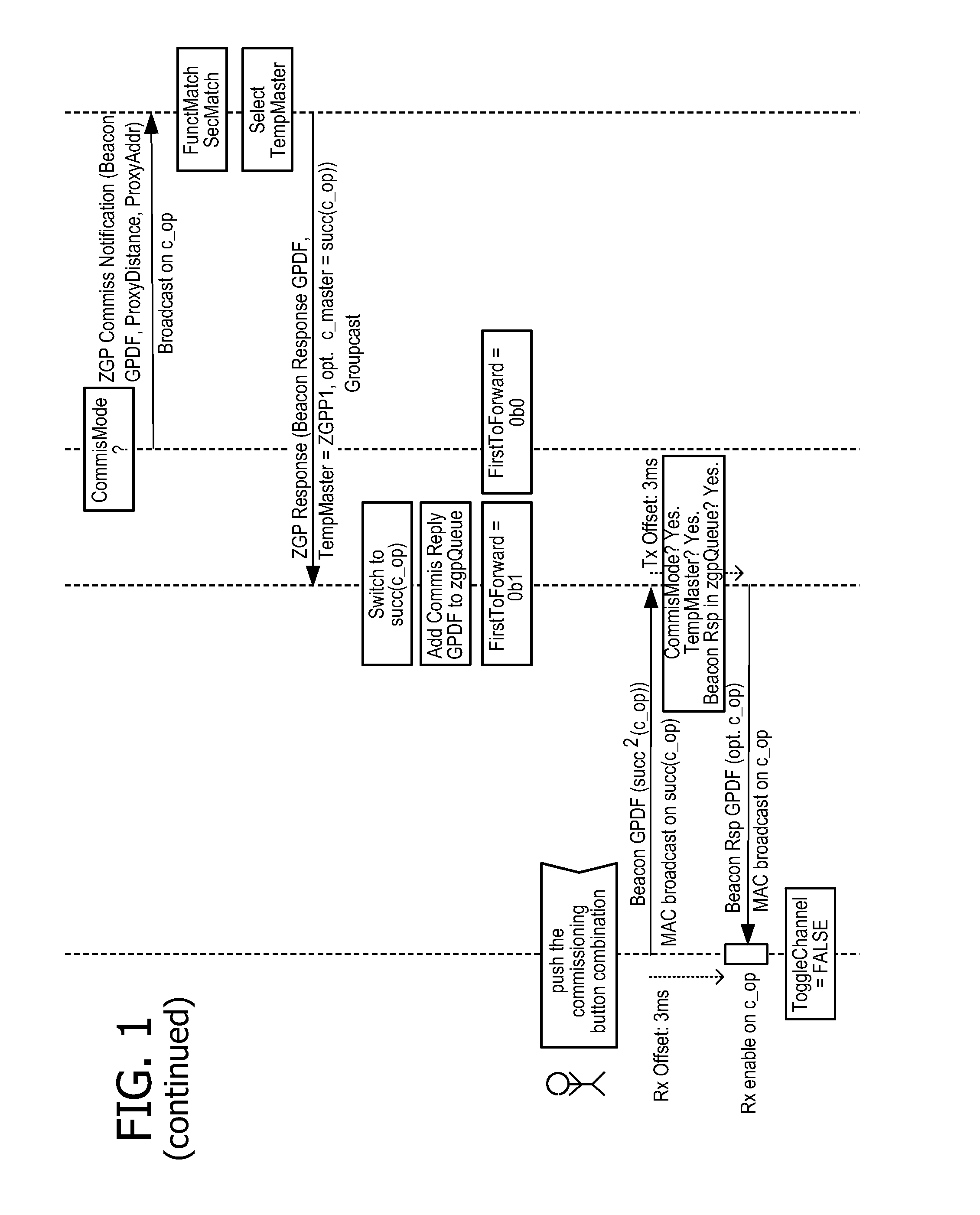Method for determining an operational channel in a communication network, energy-restricted device and proxy device
a technology of energy-restricted devices and communication networks, applied in sustainable communication technologies, climate sustainability, high-level techniques, etc., can solve problems such as passive or active scanning for network activity, inability to use a predefined separate commissioning channel, and negatively affecting sleeping zigbee end devices
- Summary
- Abstract
- Description
- Claims
- Application Information
AI Technical Summary
Benefits of technology
Problems solved by technology
Method used
Image
Examples
second embodiment
[0076]In a first and second embodiment, succ and listen are such that listen(succd(c))=c for all c in C, whereby d is non-negative integer.
[0077]For each attempt, the ZGPD thus transmits and receives on different radio channels, viz. radio channels c and listen(c), respectively, whereby the channel it listens on is the channel it transmitted on in the previous attempt. Also, the temporary master sends on a radio channel (viz. listen(succd(c_op))) that is different from the one on which it received the trigger for sending the response (channel succd(c_op).
first embodiment
[0078]In the first embodiment, the value of m is thus fixed to m=d, by the ZGPD or by specification. The advantage of this embodiment is that the ZGPD receives the beacon response on the operational channel c_op and hence need not switch channels anymore, or be explicitly informed about the value of c_op. If the device stores the channel it listens to in each given attempt, it's equal to the c_op, so it doesn't need to be stored anymore. If the device stored the channel it sends on, it can calculate the c13 op as reverse of the succ(c) function and must store it. The value of succm(c_op) must be known to the temporary master, either by the presence of the value of succm(c) in the beacon sent on channel c, or by knowledge of the function succ(c) in a specification and knowledge of m, or by knowledge of the function succ(c) and function listen(c), either in a specification or present in the beacon. The temporary master also must know it should send on c_op, either because this is pres...
fifth embodiment
[0080]In a third, fourth and fifth embodiment, listen(c)=c for all c in C. In this case, with the energy harvested from one button press, the ZGPD thus transmits and receives on the same radio channel, and the temporary master transmits on the channel on which it received the trigger for sending the beacon response (namely channel succm(c_op)).
PUM
 Login to View More
Login to View More Abstract
Description
Claims
Application Information
 Login to View More
Login to View More - R&D
- Intellectual Property
- Life Sciences
- Materials
- Tech Scout
- Unparalleled Data Quality
- Higher Quality Content
- 60% Fewer Hallucinations
Browse by: Latest US Patents, China's latest patents, Technical Efficacy Thesaurus, Application Domain, Technology Topic, Popular Technical Reports.
© 2025 PatSnap. All rights reserved.Legal|Privacy policy|Modern Slavery Act Transparency Statement|Sitemap|About US| Contact US: help@patsnap.com



